

|
|
Sri Maha Rudra Yagya |
|
|
The Maha Rudrayagya is a specific form of yagya for Lord Shiva which the yagya group has performed every year prior to Shivaratri. The yagya takes place over a period of 11 days, during which 11 priests perform Rudra abishekam 11 times each day with 11 specific traditional ingredients. This is followed by a Rudra Homam (fore yagya) as seen above. The daily routine takes place from roughly 7 AM to 1 PM. Then again in the evening an extensiec puja is performed during which the 1008 names (mantras) of Shiva are recited as 1008 bilva leaves are offered to the Shiva Lingam. The Maha Rudra yagya concludes the morning of Shivaratri and in the evening and throughout the night the priests will be performing the traditional Shivaratri services at a local temple in Kanchipuram. |
|
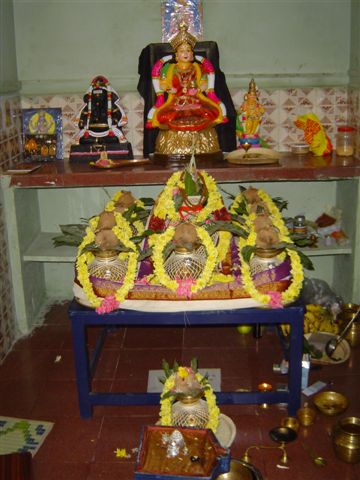 |
|
In the puja room there are 11 kalasha pots; 1 for each major form of Rudra. Every day fresh flower garlands are offered on the kalsha pots which are decorated with mango leaves and coconuts on top. |
|
 |
|
|
Yagyas begin with a puja to Ganesha to remove all obstacles. The Ganesha murti can be very simple; here you see one carved of sandalwood and in front of it a lump of turmeric powder mixed with water with a dot of red kumkum on it. Both represent Ganesha and the puja offerings of fruit and flower are made to them. |
|
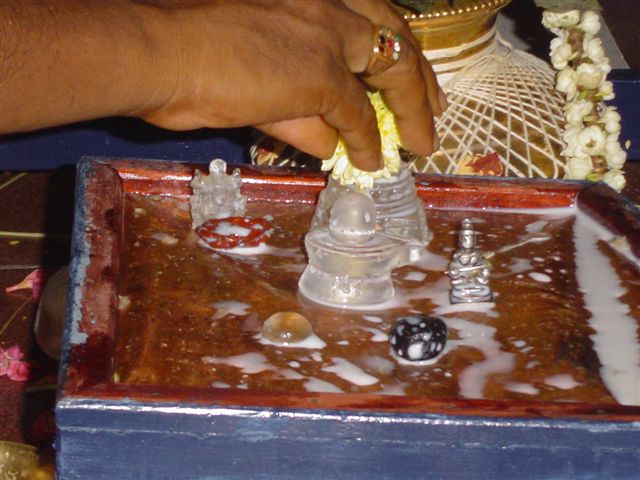 |
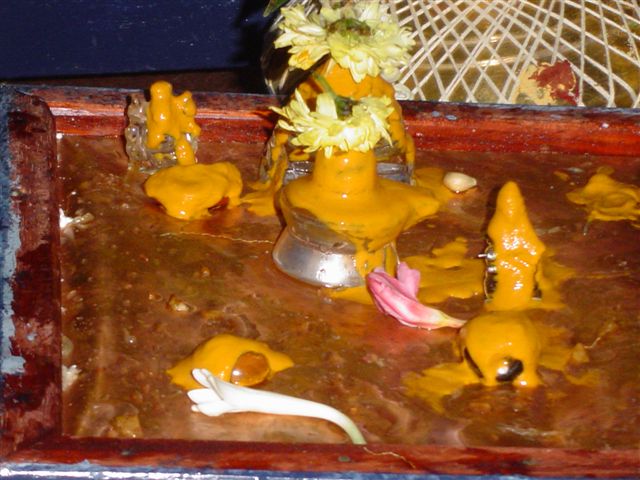 |
| Each of the 11 recitations of Rudram (a portion of Yajur Veda) is accompanied by the pouring of different liquid ingredients over the Shiva Lingam. Here you see milk offering on the left and sandalwood on the right. In the Shankara tradition, in addition to the Shiva lingam, worship is offered to Ganesha, the Sun, Moon, Vishnu, and Lakshmi in various forms which you see in the images above. | |
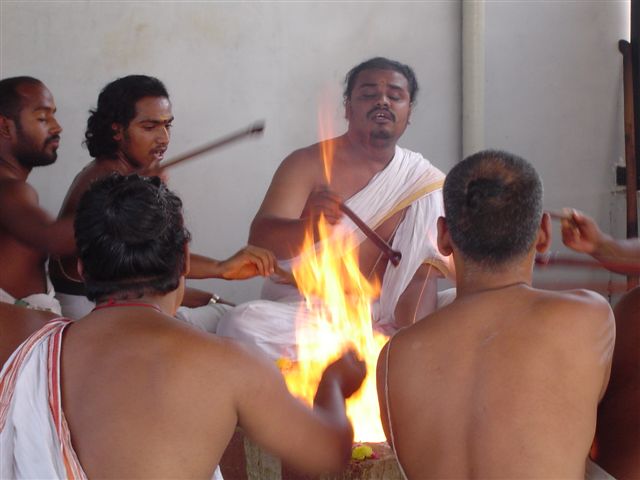 |
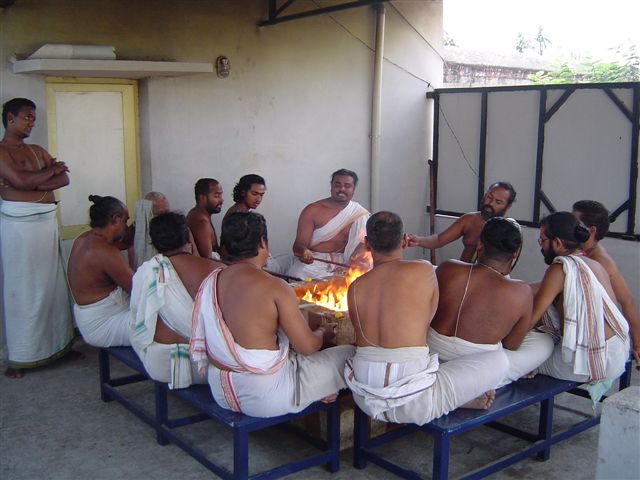 |
| After the Abishekam portion of the yagya, the homa fire is lit and offerings are made into the fire while the Yajur Veda hymns called Rudram and Chamakam are recited. | |
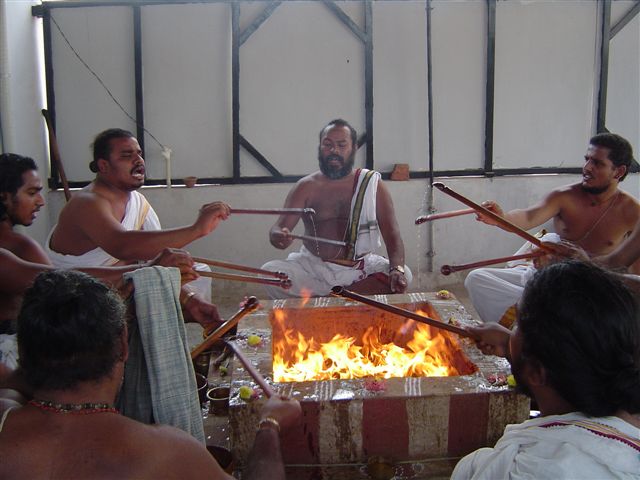 |
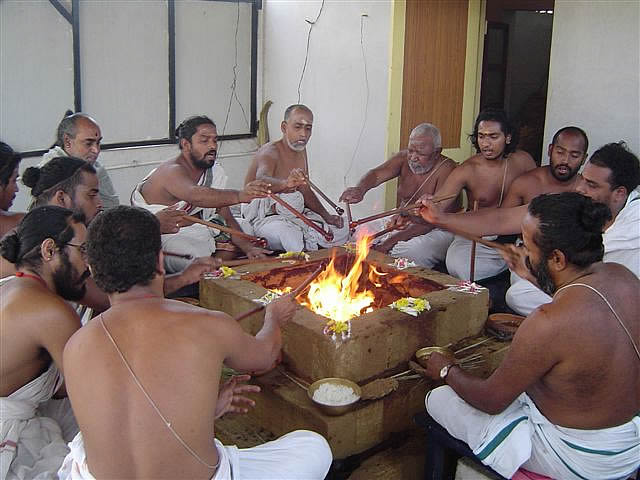 |
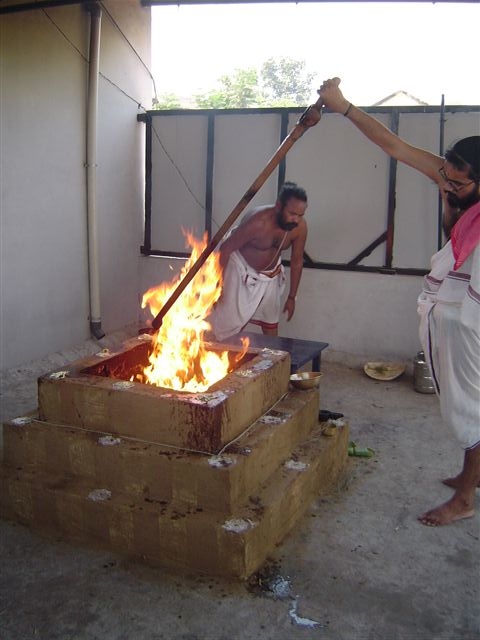 |
|
| At the end of the yagya Chamakam is recited while an unbroken stream of ghee is poured into the fire usings long carved wooden device called a vasodhara. Here the priest is emptying the last bits of ghee at the end of the yagya. | |
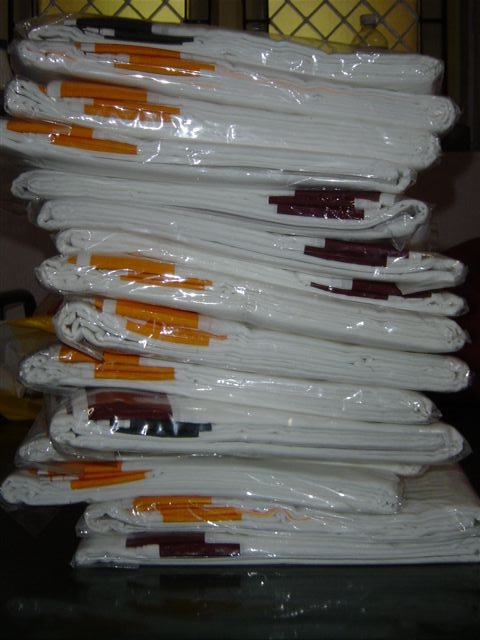 |
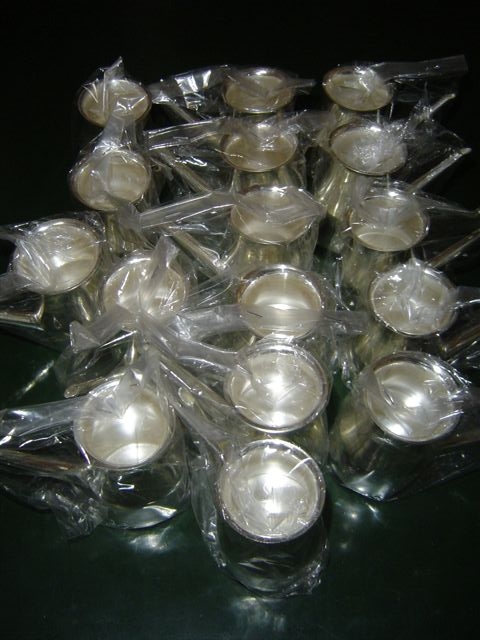 |
| As is our tradition in the Yagya Group, we offer a special gift (dakshina) to each priest to honor their participation and skill in the yagya performance. This year we are presenting them with a new dhoti and silver water container for their personal pujas. | |